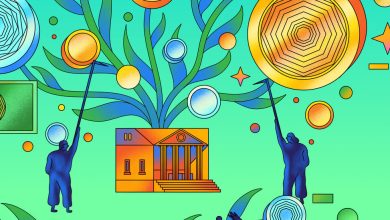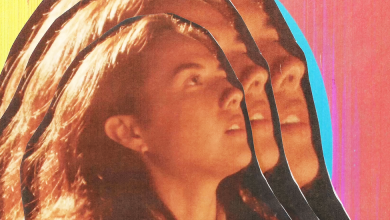We Don’t Fit Your Gender Binary. Deal With It.

A few years ago, I went to see a performance at a jazz bar in Greenwich Village. I remember feeling happy, buoyed by the sounds of the instruments blending. But then I got up to go to the bathroom, and there a woman chastised me for using the ladies’ room. I never expected something like this to happen in New York City.
When you’re a butch dyke like me, people often assume you’re a man. When you present outside the norm, it can sometimes make you feel you’re unworthy somehow. Too often it feels as though society doesn’t see our humanity. The way people sometimes speak to us can be so dehumanizing.
This photography project was born out of my frustration with being misgendered. I set out to photograph people whose look doesn’t fit a gender stereotype. I wanted to show my subjects in the light of joy and beauty, with images that say: This is who we are and what we look like — can you give us some space?

Felli, they/them, New York City, 2021. “Every day, I give thanks to the queer people who paved the way for me to be here. I am because of them. I present myself unapologetically to offer representation for people like me.”
It was important for me to create images that others could see themselves in, because I never had that growing up. When I was a child, there just weren’t portraits of heroic Black people I could look to, beyond Martin Luther King Jr. and Malcolm X. As I got older, more women were held up during Black History Month, but queer women were missing from the narrative.
I usually work in my small living room. But for this series, I worked in a studio to create a space to collaborate with my subjects. I had a desk for us to sit at and look at the pictures together.
With the white background, the models are creating their own space; there is nothing to distract your eye from them. In each photo, I want you to see the person.
“Give me some pride,” I’d say before pressing the shutter. But the people I photographed already exuded a sense of pride. For me, it was a matter of connecting with them and capturing it. I like to think we see ourselves in one another.
I know most of the people I photographed for this series. Rio and I have been working together to establish different funds that support Black trans people and — through Queer Art, a nonprofit arts organization that serves a diverse community of L.G.B.T.Q. artists — sustain queer artists of color. Jay lives in my building, and she was at Stonewall. Felli was my mentee.
I had long wanted to photograph Linda. She’s photogenic, funny — an icon in her own right. Michele was the bouncer at the Clit club in New York back in the day. April is an amazing D.J. and a kind of Renaissance woman. Marty is a steady and reliable friend, a great writer with a killer sense of humor. Joe has this wonderful energy and is one of those young people who have an awareness of how to move in the world.
A growing number of young people are moving beyond the idea that we live in a world where sexuality and gender come in only two forms. It’s wonderful to be alive during this time. But it’s worth remembering what it was like before, how it still is in much of the world.
My friend the poet and activist Pamela Sneed expressed it beautifully: “Every time we found each other in darkness and in light, it was resistance. When we wore what we really wanted to wear, it was resistance. When we told each other, ‘You’re beautiful,’ ‘You’re not wrong,’ it was resistance.”
Lola Flash is a photographer whose work focuses on social, L.G.B.T.Q. and feminist issues. The photographs here are part of the portrait series “surmise.”
The Times is committed to publishing a diversity of letters to the editor. We’d like to hear what you think about this or any of our articles. Here are some tips. And here’s our email: [email protected].
Follow The New York Times Opinion section on Facebook, Twitter (@NYTopinion) and Instagram.





